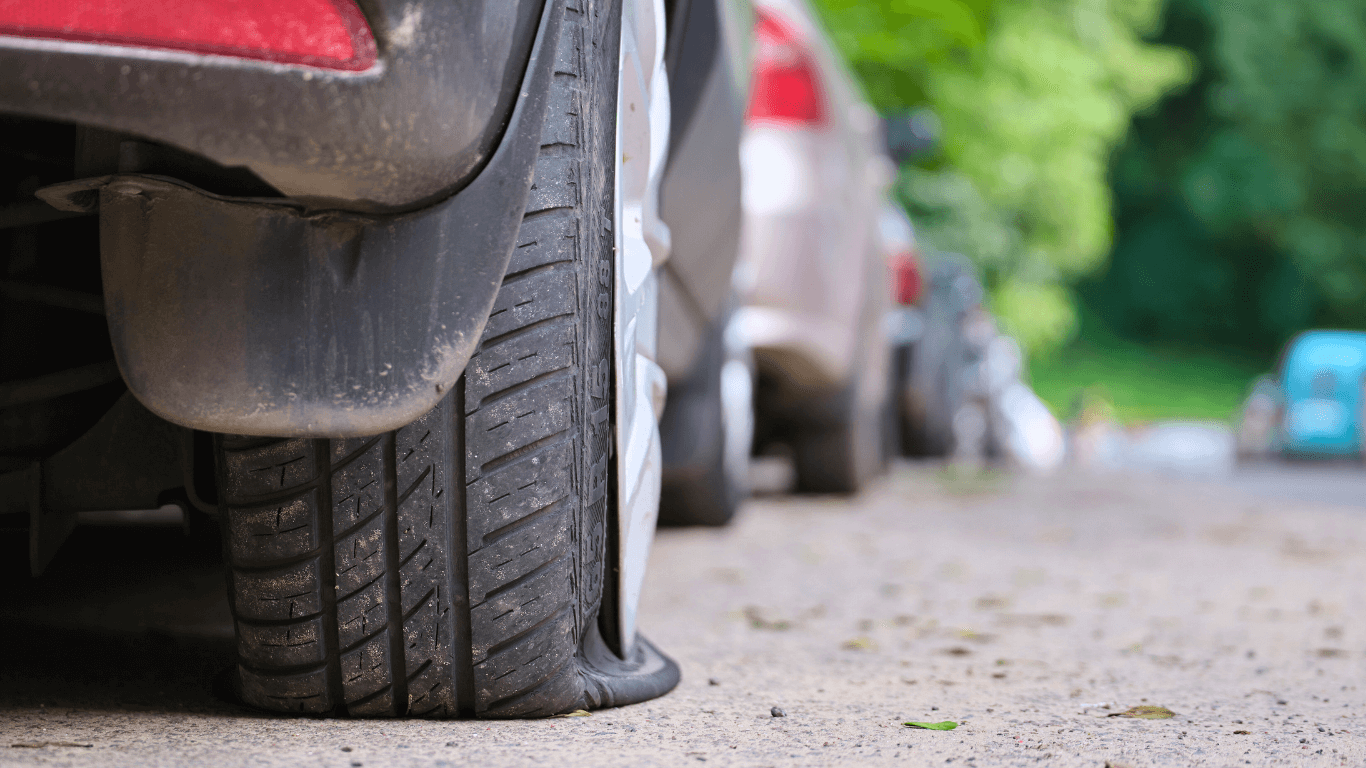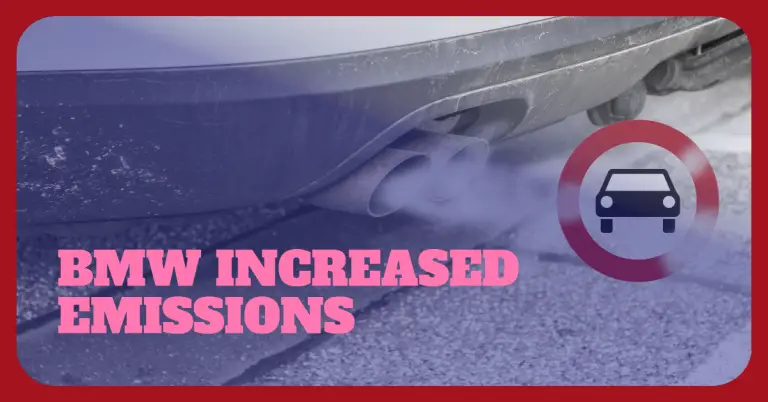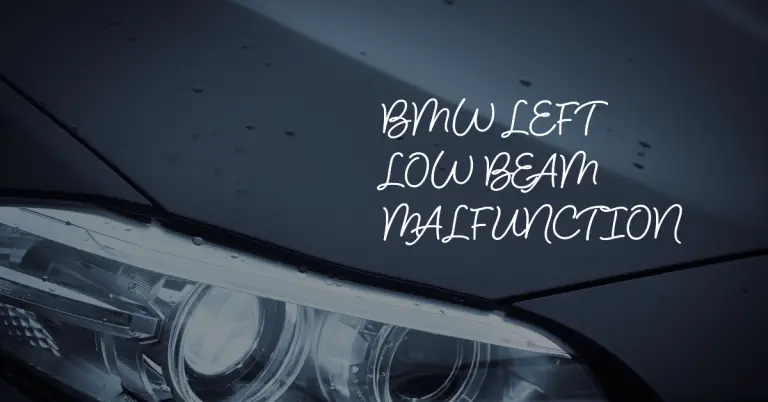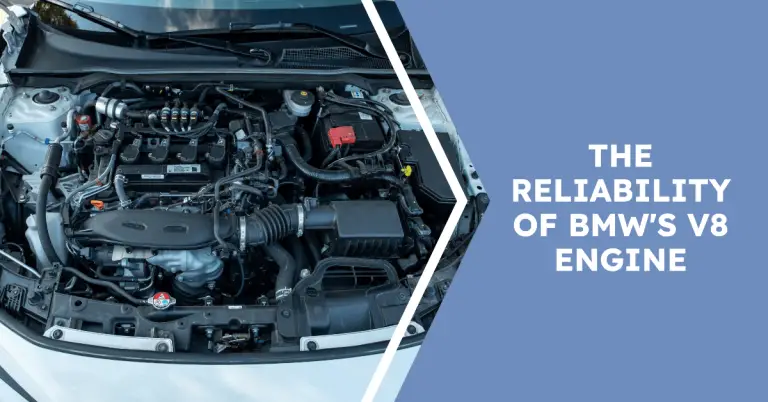BMW Run Flat Tires Problems: Common Issues and Solutions
If you’ve ever had a flat tire, you know just how inconvenient and dangerous it can be. You’re forced to pull over immediately, put on the spare, or call for assistance. But what if you could just keep driving, even with a puncture? That’s the idea behind run-flat tires.
Run flat tires allow you to drive up to 50 miles after a loss of pressure. But are their benefits worth the higher cost and rougher ride?
In this comprehensive guide, we’ll cover everything you need to know about BMW run flat tires, including:
- What are run flats and how do they work?
- The advantages of run flat tires
- The potential downsides to be aware of
- FAQs – do you need a spare, how to tell if you have run flats, and more
- Factors to consider when deciding if run flats are right for your BMW
After reading this guide, you’ll understand the pros and cons of BMW run flat tires so you can decide if they are the right choice for your driving needs and budget.
What Are BMW Run Flat Tires?
Run flat tires are a type of tire technology that allows a driver to continue driving even after a total loss of air pressure. They were first developed in the late 1990s and began appearing as original equipment on many BMW models in the 2000s.
Run flat tires have reinforced sidewalls that are strong enough to prevent the tire from collapsing when air pressure is lost. This allows you to keep driving safely for up to 50 miles at speeds under 50 mph after a puncture.
The reinforced sidewalls are made from a combination of specialized rubbers and polymers. In some tires, they also contain an inner support ring made of composite rubber. This extra structure keeps the tire in its normal round shape so the contact patch with the road is maintained.
In addition to the reinforced sidewalls, many run flat tires also have an inner liner that acts as a barrier to prevent air from escaping the tire if punctured by a small object like a nail or screw.
This self-sealing inner liner allows run flats to act as both a spare tire and a temporary fix, getting you to a tire shop safely in the event of a puncture. Normal tires would require an immediate stop to prevent a rapid air loss or dangerous blowout.
BMW uses two main types of run flat tire technology:
- RSC (Reinforced Sidewall Construction): This older run flat design relies solely on the strength of the reinforced sidewalls to support the weight of the vehicle if air pressure is lost. Tires with RSC may be labeled with a circular RSC marking.
- RFT (Reinforced Flat Tire): This newer run flat design not only has reinforced sidewalls but also has a special self-supporting insert inside the tire to maintain tire shape and temporarily seal punctures. Look for the RFT marking on the sidewall.
Now that you understand what BMW run flat tires are, let’s explore the specific benefits and drawbacks of this type of tire technology.
The Benefits of Run Flat Tires
There are some clear advantages to having run flat tires on your BMW:
Avoid Getting Stranded after a Flat
The #1 benefit of run flat tires is the ability to keep driving after a loss of air pressure. Rather than having to immediately pull over and put on your spare, you can continue driving for up to 50 miles to get somewhere safe.
This gives you the flexibility to drive to a tire shop, gas station, or exit the highway before dealing with the flat tire. It also means you don’t have to change a tire in an unsafe location.
Run flats provide peace of mind, as you won’t end up stuck on the side of the road waiting for a tow truck. This can be especially reassuring if you frequently drive in remote areas far from assistance.
Improved Stability and Handling
Due to their reinforced sidewalls, run flat tires have less flex and deflection in corners. This gives them enhanced stability and handling compared to normal tires.
Drivers report that BMWs with run flat tires have better steering response and cornering grip, even during performance driving. Less tire flex allows for more precise turn-in and mid-corner adjustments.
The stiffer sidewalls also mean there is less body roll around corners at speed. If you drive your BMW aggressively on winding roads, you’ll appreciate the enhanced handling confidence of run flats.
No Need to Immediately Pull Over
When a standard tire has a blowout or big puncture, you have seconds to safely pull over before control is lost. But with run flats, you can maintain a controlled slowing down and find a safe place to evaluate the situation.
Since you can drive up to 50 miles with run flats, there is no need to panic and cut across traffic or stop in an active roadway. This helps avoid dangerous situations and secondary crashes.
Run flats also give you time to get away from areas like tunnels or bridges where stopping after a blowout would be extremely hazardous. Overall, they provide an important safety benefit in emergency situations.
The Downsides of Run Flat Tires
However, there are also some potential disadvantages to weigh regarding run flat tires:
More Expensive to Replace
Due to their complex reinforced sidewall construction, run flat tires cost more than comparable standard tires. On average, expect to pay $200-300 more per tire when replacing run flats.
Some BMW enthusiasts choose to ditch the OEM run flats in favor of cheaper high-performance tires. However, that means you’ll need to carry a spare and have it installed after a flat.
The cost premium also means you need to be vigilant about tire wear. It’s not ideal to wait until tires are bald before replacement, as new run flats can be a sizable expense.
Shorter Tire Life
In addition to their higher initial cost, run flat tires tend to wear out twice as fast as standard tires. The stiff sidewalls wear quickly, especially when combined with aggressive cornering and driving styles.
Typically, run flat tires last around 20,000 – 25,000 miles. But they can wear out unevenly and will need replacement even earlier if you routinely push your BMW’s limits on twisty roads. Plan your tire budget accordingly.
Some drivers swap out the OEM run flats for high-performance summer tires to get more miles out of each set before needing new tires.
Rougher Ride Quality
Due to their reinforced sidewalls, run flat tires do not have the same air cushioning effects of a normal pneumatic tire. As a result, ride quality suffers.
Run flats transmit more road vibration and harshness into the cabin. You’ll also notice more road noise, especially at highway speeds. The stiff construction amplifies the sensation of bumps and cracks in the pavement.
If you value ride comfort, standard tires can provide a softer, quieter driving experience. But some don’t mind the firmer ride in exchange for the performance benefits.
Difficult Repairs
While run flat tires are designed to temporarily “fix themselves” after a small puncture, most tire shops won’t attempt to permanently patch or plug a damaged run flat.
The stiff sidewalls and inner liners make it next to impossible to repair them. You’ll likely have to replace the entire tire even after minor damage.
Repairing or replacing just one tire is also not recommended due to the AWD systems on BMWs. It’s safest and best for the drivetrain to always replace axle pairs or all four tires together.
Unfortunately, damage that could be an inexpensive fix on a normal tire usually means paying for a whole new replacement with run flats.
Frequently Asked Questions
Considering that information, you may still be wondering:
Do run flat tires come standard on BMWs?
Many newer BMW models do come equipped with run flat tires straight from the factory. However, not all trim packages include them as original equipment.
You can request standard tires instead when custom ordering a BMW. Or swap out the OEM run flats for non-run flat tires later on. Talk to your dealership about your options if interested in traditional tires instead.
Do you still need a spare tire if you have run flats?
No – having run flats essentially gives you a “spare” built right into the tire. Since you can drive up to 50 miles without air pressure, a spare is not strictly necessary.
However, it’s still smart to have a temporary spare when embarking on longer road trips. Run flats are intended only as a temporary fix to get you to a tire shop. Having a spare as a backup can provide peace of mind if you end up needing to drive more than 50 miles after a puncture.
How can you tell if your BMW has run flat tires?
There are two ways to determine if your BMW is equipped with run flat tires:
- Check the sidewalls: Look for the letters RSC or RFT molded into the tire sidewall. RSC indicates Reinforced Sidewall Construction. RFT means Reinforced Flat Tire, the newer run flat design.
- Check the tire pressures: Run flat tires need to be inflated to significantly higher pressures than standard tires. Most run flats will call for 36+ PSI for proper operations. Normal tires are typically around 30-35 PSI.
Higher tire pressures are required to support the weight of the vehicle in the event of a loss of pressure. If your BMW’s recommended pressures are 36 PSI or greater, you likely have run flats.
Key Takeaways – Are Run Flat Tires Right for You?
After learning about their unique advantages and disadvantages, here are some final tips on deciding if run flat tires make sense for your BMW:
- If you value enhanced handling, stability, and avoiding flats, run flats are an appealing option. But weigh their higher long-term costs.
- Ensure run flat tires fit your driving style and needs. If you prioritize ride comfort, standard tires may be preferable.
- Remember that run flats wear faster and cost more to replace. Inspect them often and budget accordingly.
- On longer trips, still carry a spare as run flats are only a temporary fix. Spares provide backup.
- Check your tire pressures frequently – underinflated run flats wear quickly and compromise performance.
With the right tire maintenance and realistic expectations, run flat tires can be a smart choice to boost safety, avoid flats, and enhance your BMW’s handling. Weigh your priorities carefully as you decide if original equipment run flats or an aftermarket tire swap is the best route for your driving needs and budget.







